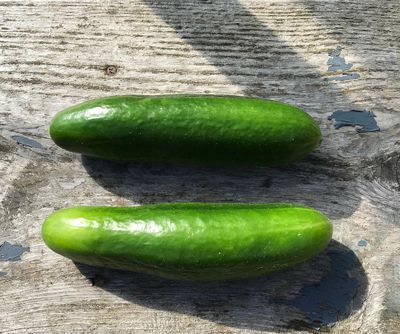In the Garden: Warm season crops as cool as a cucumber

With the month of May just around the corner, it’s time to think about growing warm season crops in the garden. In the Inland Northwest, it’s usually safe to plant them after May 15, although one should always keep a close eye on the weather forecasts.
There are quite a few crops that don’t tolerate frost at all, so it’s important to be patient. Of course, this advice is coming from the person who always loves to push the envelope by using a couple of sneaky ways to get around that. More on that in a moment.
Examples of warm season crops include beans, corn, cucurbits (cucumbers, melons, pumpkins, summer and winter squash) and members of the nightshade family (eggplants, peppers, potatoes, tomatillos and tomatoes).
Cucurbits are great fun to grow and so rewarding. My current favorite cultivars (varieties) are Straight 8 and Lunchbox cucumber, Tuscan Napoli cantaloupe, Ha Ogen honeydew melon, New England Pie pumpkin, Clarimore and trombone zucchini and Butternut, Cushaw and Delicata winter squash. Due to a heightened interest in vegetable gardening, some garden centers and online sources may not have those cultivars available, but there are plenty of others to try.
While you can plant seeds for all types of cucurbits directly in the garden, I plant mine indoors two weeks before moving them out to their summer home. The controlled indoor conditions enable better germination rates and give the seedlings a great start.
About a week before planting them in the garden, I cover their beds with a layer of plastic sheet mulch to warm up the soil. If there’s a factor that improves your chances for success with these crops, warm soil is right at the top of the list.
On planting day, I cut an X in the mulch where I want to put each seedling, dig a little hole, insert the plant and press the soil around its roots to eliminate air pockets. I water them in well and move on to the next level of pampering.
This involves placing hoops or another support structure over each bed and laying a sheet of floating row cover on them. This will keep the air around the young plants a little warmer, which makes a big difference. Floating row cover is a lightweight fabric that lets in light and moisture and gives plants a few degrees of frost protection or added warmth. It also can be used as a barrier to keep insect pests away from vegetable crops that don’t require pollination.
Cucurbits need to be pollinated in order to produce fruits, so I only leave the row cover in place for a couple of weeks, then remove it once the plants start blooming. That way, the pollinators can access them and work their magic. You will be amazed at how much the plants will have grown while under the cover.
I make sure they get plenty of water and feed them with a bit of fish fertilizer every other week for the first month. Then it’s time to stand back and watch them grow.
You can grow most cucurbits on vertical supports to save space as well as to give them plenty of light and good air circulation. I’ve grown cucumbers, melons, trombone zucchini and small winter squash or pumpkins on trellises or an arch made from livestock panels. Growing big winter squash such as Hubbard or champion pumpkins vertically is not an option because the fruits will be too heavy and challenging to support.
Contact Susan Mulvihill at susan@susansinthegarden.com. Watch this week’s “Everyone Can Grow a Garden” video at youtube.com/c/susansinthegarden.